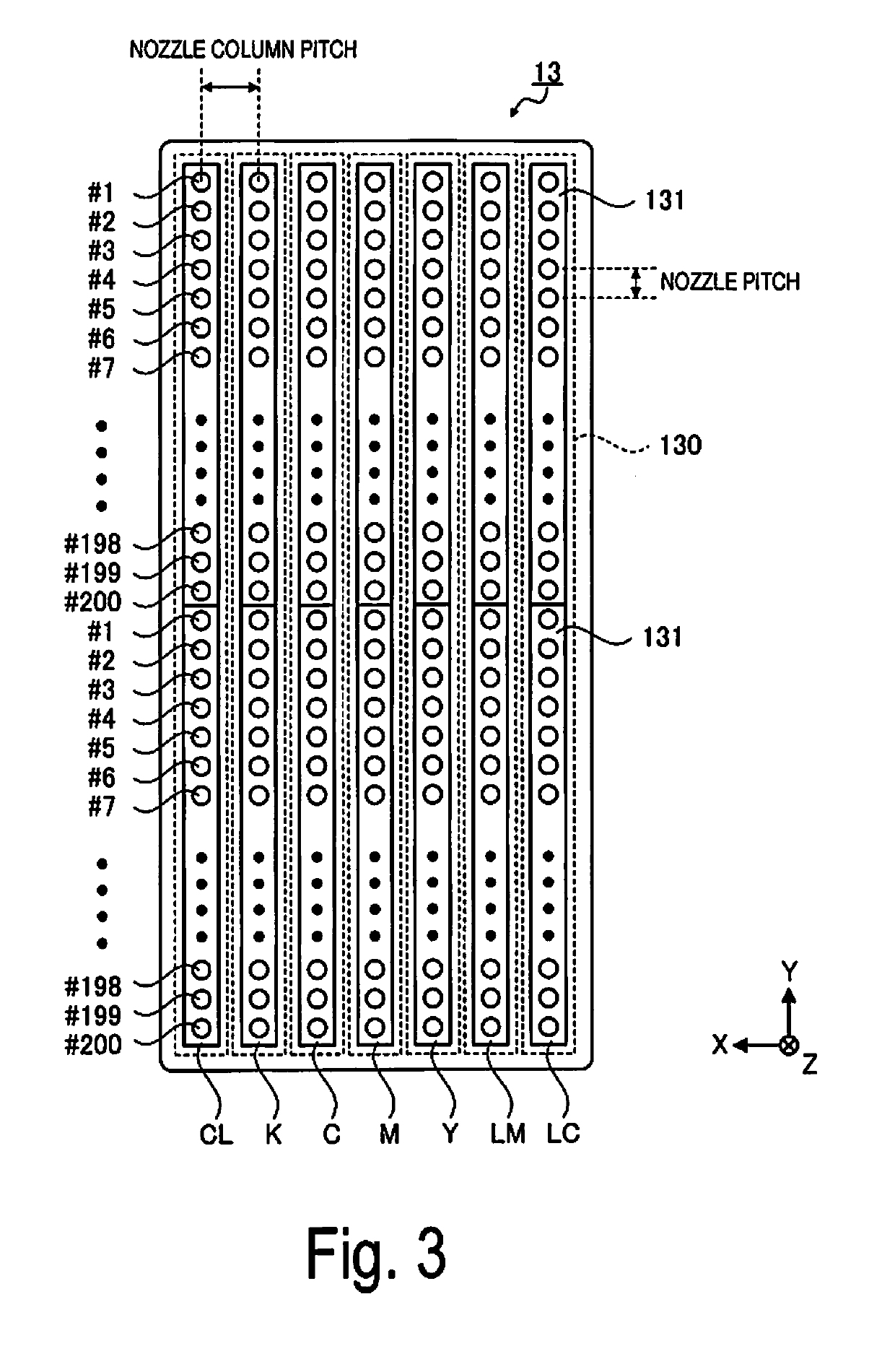Image processing device, printing apparatus, image processing method, and non-transitory computer readable medium
a technology of image processing and printing equipment, applied in image data processing, printing, instruments, etc., can solve problems such as disordered characters, lines, and lines in the print image, and print apparatus that prints images
- Summary
- Abstract
- Description
- Claims
- Application Information
AI Technical Summary
Benefits of technology
Problems solved by technology
Method used
Image
Examples
exemplary embodiment 1
[0063]FIG. 1 is a front view illustrating the configuration of a printing apparatus 1 according to Exemplary Embodiment 1, and FIG. 2 is a block diagram of the configuration of the printing apparatus 1 according to Exemplary Embodiment 1. The printing apparatus 1 includes a printer 100, and an image processing device 110 that connects to the printer 100. The printer 100 is an ink jet printer that, based on print data received from the image processing device 110, prints a desired image on a roll paper 5, which is a long “printing medium” supplied while wound in a roll shape.
Basic Configuration of Image Processing Device
[0064]The image processing device 110 includes a printer controller 111, an input unit 112, a display 113, a storage unit 114, etc., and controls a print job that causes the printer 100 to print. The image processing device 110, in one example, is configured using a personal computer. The software operated by the image processing device 110 includes an ordinary image ...
modified example 1
[0121]In Exemplary Embodiment 1, it was described that among the halftone data corresponding to the clear ink (CL), the dot formation specification determining unit converts the halftone data corresponding to the first pixel region (the region including the pixel positions adjacent to the outer side of the edge pixels and pixel positions overlapping the edge pixels extracted by the edge extracting unit) into data that does not form dots. In other words, after the halftone data corresponding to the clear ink (CL) was generated, the print data was generated by a method where a working liquid mask process is performed so that the clear ink (CL) is not discharged on the first pixel region (refer to FIG. 14), but the disclosure is not limited to this method. For example, a method may be used whereby, before performing the halftone process, or in other words, after the color conversion process, a conversion is performed to set the gradation values of the clear ink (CL) in the image data t...
modified example 2
[0124]As illustrated in FIG. 13, in Exemplary Embodiment 1, it was described that print data is generated such that the printing apparatus 1 is controlled so as not to discharge clear ink (CL) in the first pixel region, but the disclosure is not limited to this configuration (method), and it is possible to use a configuration (method) that reduces the application density of the clear ink (CL) discharged on the first pixel region. Application density means the proportion of area with dots formed per unit area. In the image processing device 110 of Modified Example 2, the dot formation specification determining unit determines the dot formation specifications such that the application density of the clear ink (CL) discharged on the first pixel region including the pixel positions adjacent to the outer side of the edge pixels and pixel positions overlapping the edge pixels extracted by the edge extracting unit is less than the application density of the clear ink (CL) discharged on the...
PUM
 Login to View More
Login to View More Abstract
Description
Claims
Application Information
 Login to View More
Login to View More - R&D
- Intellectual Property
- Life Sciences
- Materials
- Tech Scout
- Unparalleled Data Quality
- Higher Quality Content
- 60% Fewer Hallucinations
Browse by: Latest US Patents, China's latest patents, Technical Efficacy Thesaurus, Application Domain, Technology Topic, Popular Technical Reports.
© 2025 PatSnap. All rights reserved.Legal|Privacy policy|Modern Slavery Act Transparency Statement|Sitemap|About US| Contact US: help@patsnap.com



